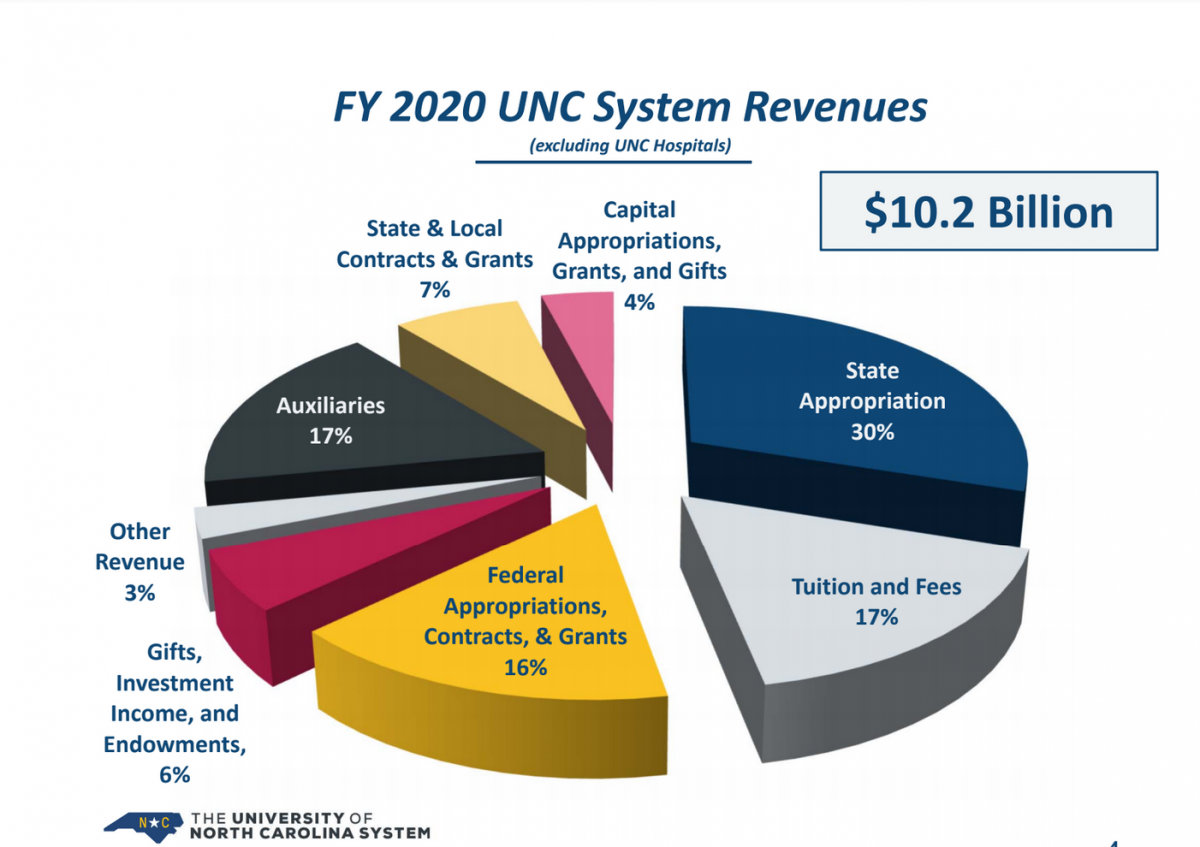Everything that the UNC system and its constituent institutions do is dependent on a generous inflow of money. In fiscal year 2020, the UNC system received $10.2 billion in revenues, excluding revenues for UNC hospitals.
Where does all that money come from?
By far, the state of North Carolina is the system’s largest source of funding—followed by tuition and fees, as well as money made by residence halls, food services, etc. Below is a breakdown by percentage of the system’s revenue sources:
- State Appropriation: 30 percent
- Tuition and Fees: 17 percent
- Auxiliaries: 17 percent
- Federal Appropriations, Contracts, and Grants: 16 percent
- State and Local Contracts and Grants: 7 percent
- Gifts, Investment Income, and Endowments: 6 percent
- Capital Appropriations, Grants, and Gifts: 4 percent
- Other Revenue: 3 percent
Over a five-year period (fiscal year 2015-2016 to fiscal year 2019-2020), the UNC system’s General Fund revenues changed in the following ways:
- “State Appropriation” revenues increased by 12 percent
- “Tuition Resident” revenues increased by 10 percent
- “Tuition Nonresident” revenues increased by 9 percent
- “Fees” revenues decreased by 2 percent
- “Other” revenues increased by 25 percent
- “Intragovernmental Transfers” revenues increased by 8 percent
- “Carry Forward from Prior Year” revenues increased by 87 percent
Regarding fees, the report notes: “S.L. 2012-142, Section 9.9 permitted all student fees to be budgeted in Institutional Trust Funds, rather than the General Fund.”
Here is a summary of how the system spends its revenue.
Shannon Watkins is senior writer at the James G. Martin Center for Academic Renewal.

